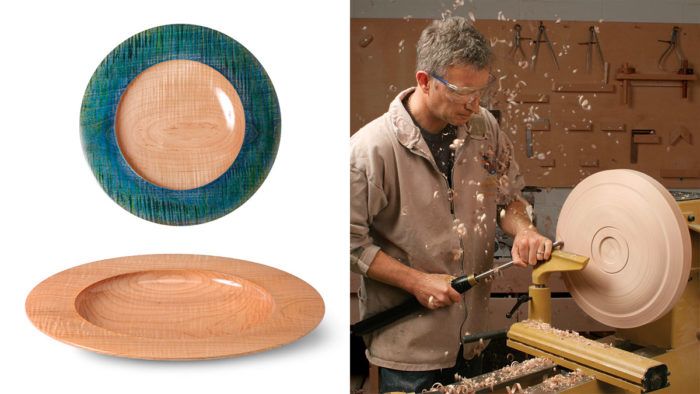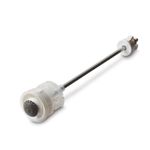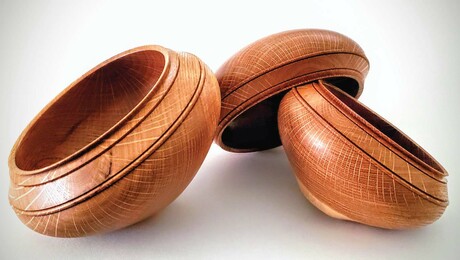Faceplate Turning Is Fun
Shed your inhibitions: there’s more to owning a lathe than turning knobs and legs.
Synopsis: If your wood turning has been confined to knobs and legs, it’s time to branch out and start having some fun with your lathe. Try faceplate turning, the art of transforming a chunk of log or a block of wood into a stand-alone, artistic piece. Learn the basic sequence for turning a blank into a bowl or platter, the simple set of four tools you’ll need for any faceplate turning project, and how to sand, seal, and apply a finish to your work.
When it comes to turning, most furniture makers, not surprisingly, confine themselves to making furniture components. Regardless of the style, whether Shaker legs or period finials, almost all parts are turned between centers with the grain running parallel to the lathe’s bed, a process known as spindle turning. However, there is another dimension to turning—faceplate turning—where the blank is attached just to the headstock end with the grain perpendicular to the bed.
Faceplate turning allows you to explore a whole new world of artistic woodworking, creating beautiful objects from start to finish in a few hours. Yet the tools and techniques are not that different from the ones you spindle turners are already familiar with. I’ll demonstrate the steps involved by turning a platter, but a bowl is turned in the same way.

Freed from the conventional restrictions of furniture making, you’ll find that turning stand-alone artistic pieces allows you to use a far wider range of wood. You only need an interesting chunk of a log, not a clear, 8-ft. section cut into boards and dried for a year. And in faceplate turning, the contrast between sapwood and heartwood is often prized, and irregularities like bark inclusions and burls are put on full display. However, you still want to avoid wood with cracks and checks in it, because the blank can fly apart. Although you can turn green wood, in this case I used kiln-dried curly maple.
The basic sequence
The sequence for most faceplate turning is as follows: First, draw a circle on the wood using a compass. This not only gives you a line to follow on the bandsaw but also marks the center of the blank. After sawing away the waste, mount the blank with the outside or underside of the platter facing the tailstock. The simplest and most secure way to attach it to the lathe is using a faceplate, hence the name for this type of turning. Most lathes come with at least a small faceplate, but aftermarket plates in all sizes are inexpensive and easy to find. Next, shape the base or foot so that it can be attached to a four-jaw chuck (see “The Lathe Accessory Everyone Needs,” FWW #212), and turn, sand, and finish the rest of the outside. Remove the workpiece from the faceplate and mount the base in the four-jaw chuck. Now you can turn and finish the inside and top of the platter.
For the full article, download the PDF below:
From Fine Woodworking #218
Fine Woodworking Recommended Products

CrushGrind Pepper Mill Mechanism























Log in or create an account to post a comment.
Sign up Log in